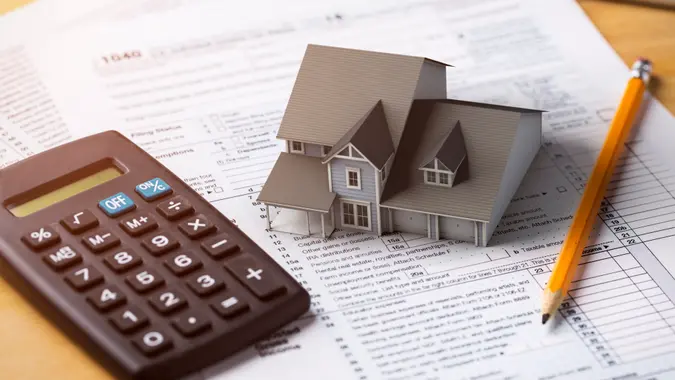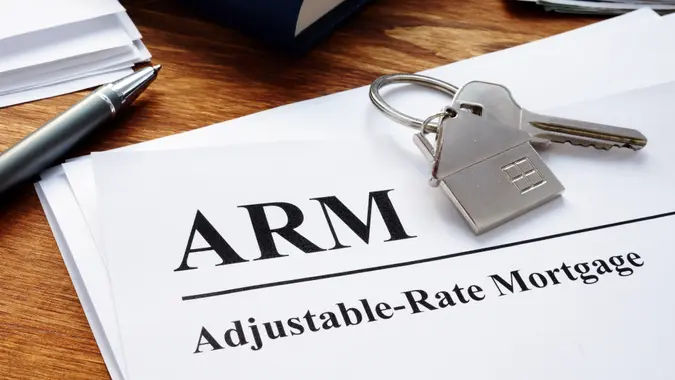No Cost Refinancing
Commitment to Our Readers
GOBankingRates' editorial team is committed to bringing you unbiased reviews and information. We use data-driven methodologies to evaluate financial products and services - our reviews and ratings are not influenced by advertisers. You can read more about our editorial guidelines and our products and services review methodology.

20 Years
Helping You Live Richer

Reviewed
by Experts

Trusted by
Millions of Readers
The terms of a mortgage loan can often be reevaluated and changed from time to time, depending on what the home owner wants and what the lender agrees to. One change that a home owner can make is a no-cost refinancing. A no-cost refinancing is one where your lender pays all the fees associated with processing a mortgage loan, in exchange for a higher interest rate.
No-cost refinancing is a popular way to refinance a home loan. It allows people to avoid processing fees, which can be in the thousands of dollars. Unfortunately, those fees you save initially are still charged to you over time, in the form of higher interest rates. In fact, if you plan to hold your mortgage for at least 3-4 years, it is almost guaranteed that you will end up paying more in higher interest rates than if you simply paid all the fees upfront. And if you plan to hold the new mortgage for 10-15 years or more, for every $1000 you save in initial fees, you will probably pay $3000-5000 over time.
The math is stacked against you, and the advice is simple: unless you plan to refinance again (or sell the house) within the next 3 years or so, don’t even think of doing it! Go with the lower interest rate on the mortgage, rather than the no-upfront-cost feature.
If you want to do the math for yourself, it won’t be too hard. Just compare the total payments you make to the lender in the case of no-cost refinancing and regular refinancing, over the next 3, 5, 10, and 20 years.
 Written by
Written by 























